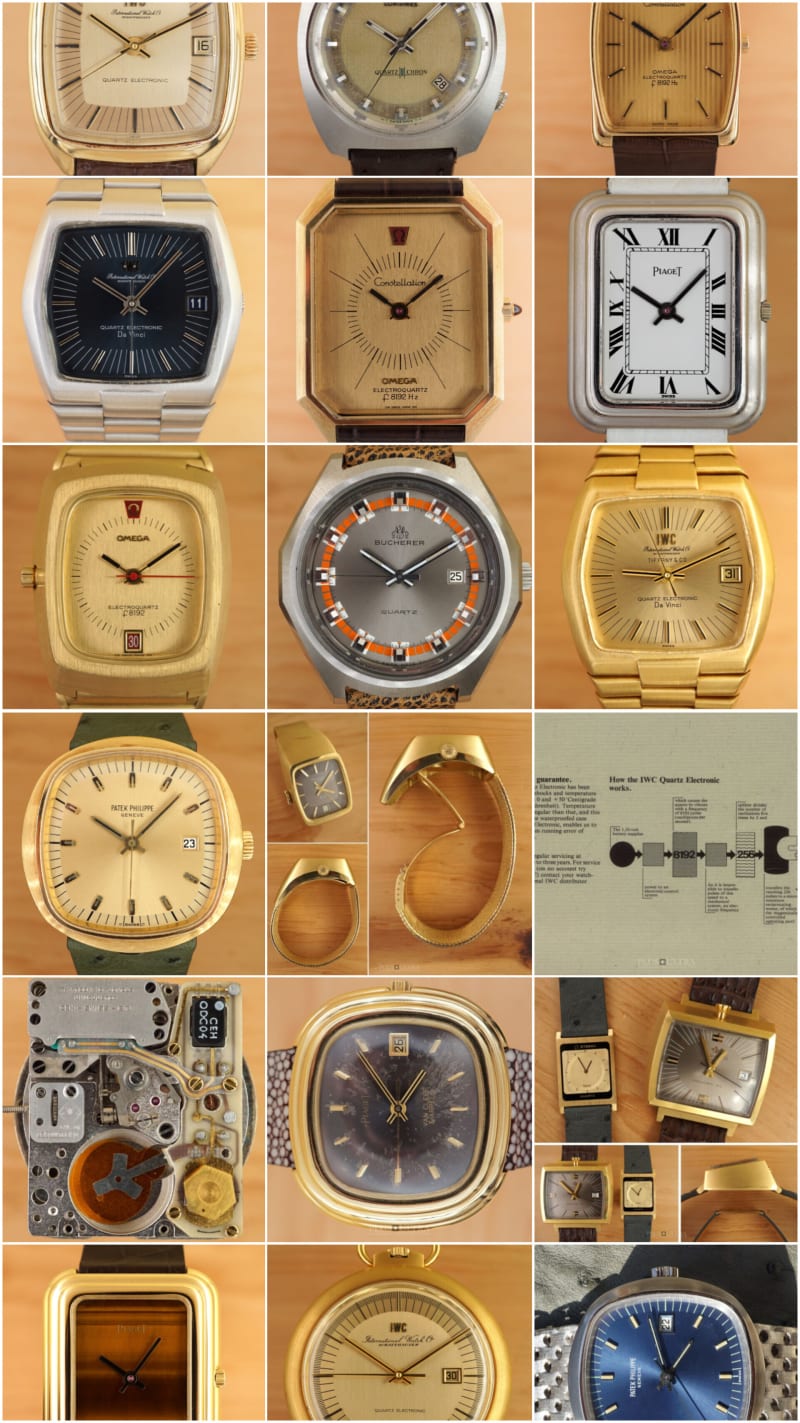The first Swiss quartz-movement was jointly developed by the 15 companies participating in Centre Electronique Horloger (C.E.H) by providing a certain part of the financial funding -- and in that ratio the 6'000 produced movements were distributed. All this was fixed ex ante already and at the moment when there was a success in development of a quartzwatch-movement each of the participants knew exactly how many of these fruits of joint research-efforts he would get -- not more and not less: a limited edition.
The numbers were as follows (approx)
- Piaget made ~300 Beta21: 80% ref14101 & 20% ref15101;
- Rolex made ~400 Beta21 with their ref5100;
- Patek made ~400 Beta21 with their ref3587;
- IWC made ~600 Beta21 in three different watches;
- Omega made almost 2'000 Beta21 with their 196.005 -- most in steel;
And the manufactured (in the essence of the word: hand-cut and -adjusted quartz-crystals besides manual soldering etc) movements were distributed whenever a small lot was finished; literally one after another. The first pieces were provided for the presentation on the April 1970 Basle Fair -- and it could be said that literally just two handful of watches were available for presentation purposes for each participant. However, the customers were impressed and so it was easy for the important brands to sell their limited edition Beta21's right away on the fair in April 1970: Patek, Piaget and Rolex had nothing to sell anymore after the fair closed its gates: "Quartz Sold Out!" But they had a lot to deliver. The pieces were all sold and delivery took until the 2nd half of 1972 -- when the last of the 6'000 Beta21-movements were received from the CEH. Notabene: just around 150 movements were produced until April 1970 (Basle Fair & Beta21-Presentation) and just another 150 until the end of 1970 -- so 300 in total, shared across the 15 brands. So to get a Beta21 -- the 1st Swiss quartzwatch -- in 1970 you had to be not only a good but one of the most important customers to the brands. About Bulova, IWC and Omega I am not sure how many of their contingents were sold right away in April 1970.
But not everyone was so successful: Zenith, Universal Geneve, Jaeger LeCoultre for example had issues selling their expensive -- keep in mind: the development costs were shared between 6'000 movements, which were usually cased in heavy all-gold cases -- horological milestones, because they didnt have the clientele that was willing to pay the prices for these. And so they not even made more than the handful of pieces shown on the Basle fair -- selling their contingents of the CEH-movements to other, more successful brands, that were in need of further movements to meet the demand.
And here the Beta22 gets a moment: CEH was a project of developing a quartz-movement and producing 6'000 of it. But some brands had much more demand and were not able to sell anything in late 1970 and 1971 because the initial series wasnt produced yet but already sold. And so after these 6'000 movements were done in late 1972, Omega took over the production -- Omega was already heavily involved in the assembly -- and produced several thousands more (>15'000), which were mainly used in their own watches but also sold to Rolex, Patek, IWC and Piaget. The interesting thing: Rolex could simply produce more of their ref5100 "Texano" because they never called it a limited edition. Different at Patek and Piaget: the Patek ref3587 was sold as a limited edition (which it was, Beta21) and so the additional demand had to be fulfilled by a slightly different ref3597 and the ref3603 with a Beta22-movement because the best customers, which were the ones that received the limited edition would have been a bit upset otherwise; similar at Piaget which introduced the ref14102 and ref15102 after their Beta21-references, namely ref14101 and ref15101 was sold out.
Good to know: Beta22 was never an official name but the description for the technically similar movement produced after the CEH-produced 6'000 were finished. To see a technical comparison *klikk here.
